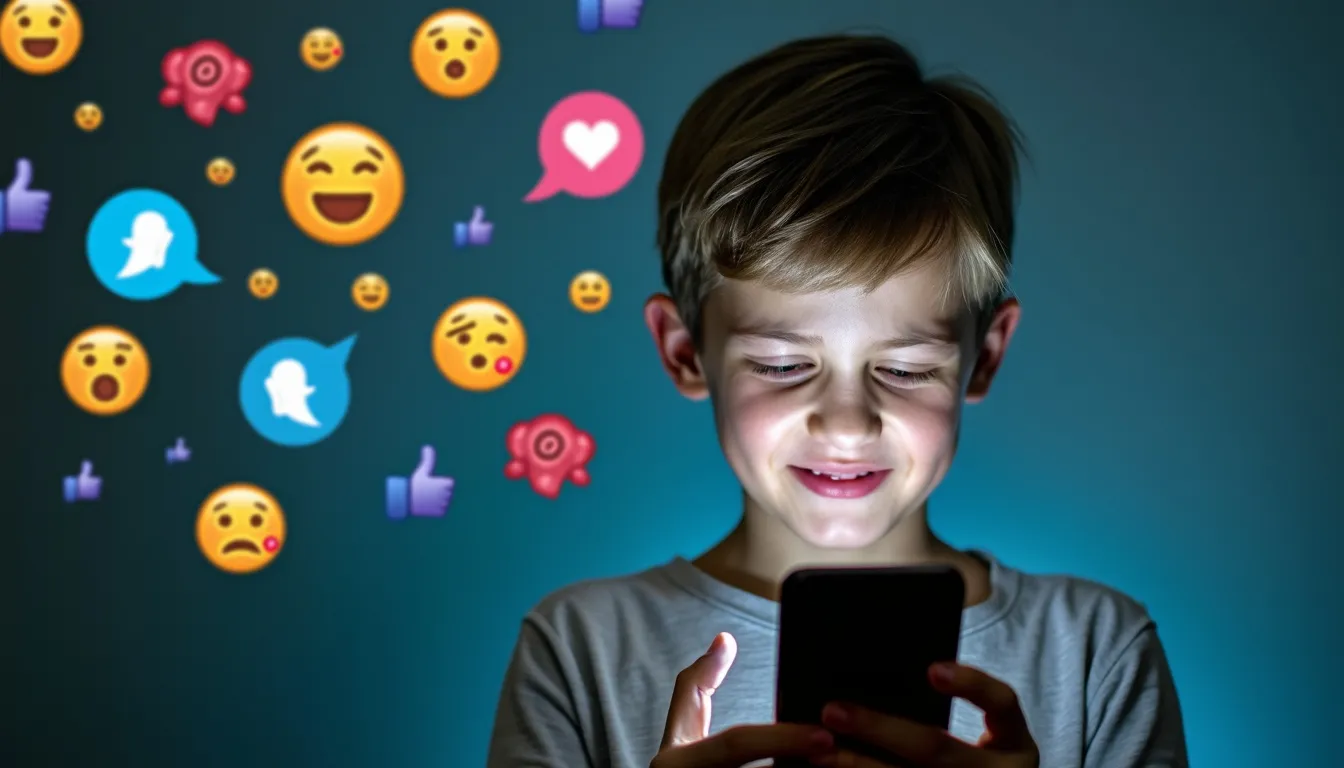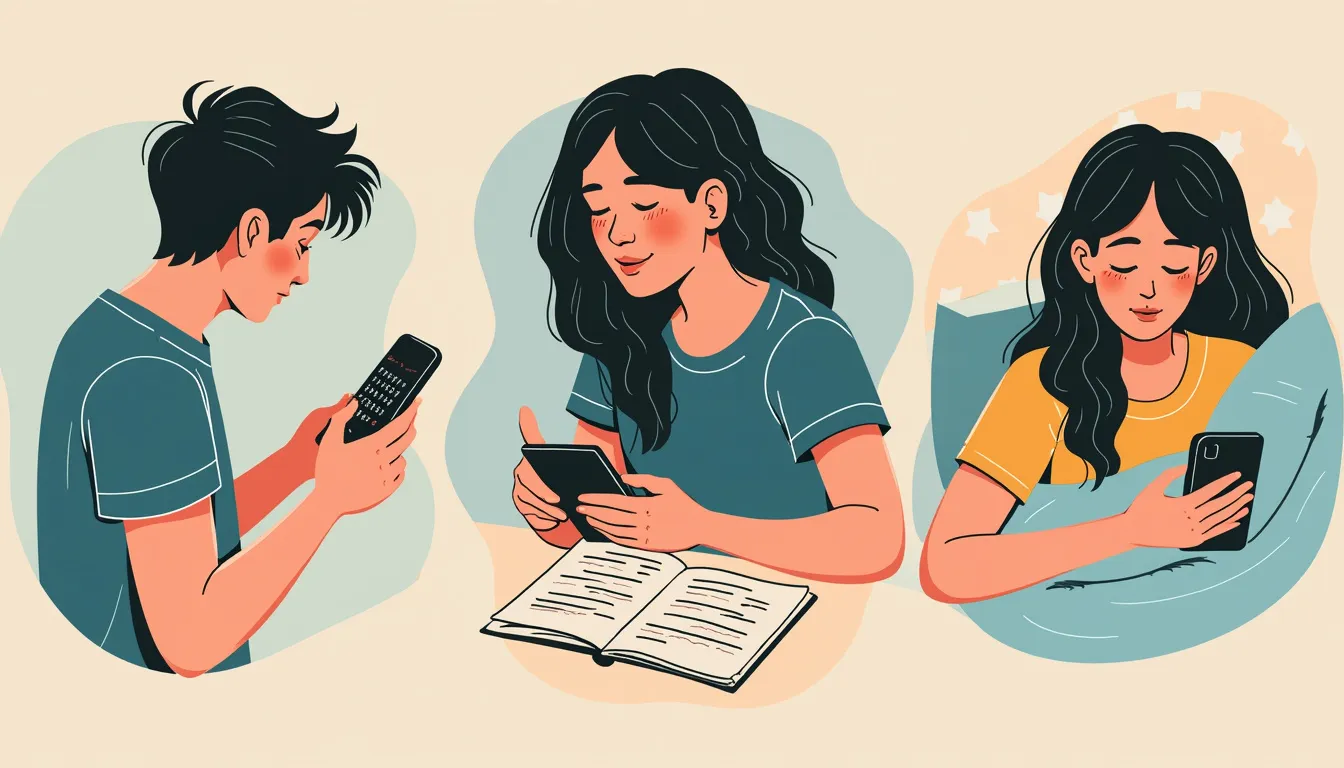ADHD in the Digital Age: How to Balance Screen Time, Social Media, and Mental Health

In today’s world, digital technology surrounds us. From smartphones and social media to streaming services and video games, our lives are interwoven with screens. For individuals with ADHD, however, the constant digital stimulation presents unique challenges. While technology can offer educational and social benefits, excessive screen time and continuous engagement with digital media may intensify ADHD symptoms and impact mental health.
This journal explores the effects of screen time on ADHD and provides practical strategies for managing technology use in a balanced way. We’ll look at how tools like the Bonding Health App support parents, teachers, and individuals in building healthier digital habits, which can lead to improved focus, emotional regulation, and overall mental well-being.
The Double-Edged Sword of Technology for ADHD

For those with ADHD, technology offers significant advantages. Educational apps, organization tools, and social platforms provide instant feedback, encourage engagement, and support self-expression. However, the highly stimulating nature of digital content can also contribute to issues like hyperfocus, impulsivity, and difficulty detaching from screens.
Research shows that ADHD brains are particularly sensitive to dopamine, the brain’s reward chemical. Digital devices, especially those that provide instant rewards, can make it easy for people with ADHD to become "hooked" on screens. This pattern can make it challenging to stay focused on real-world activities. Apps like the Bonding Health App have been developed to help individuals find structure amidst digital engagement, providing tools for emotional regulation and time management, which can mitigate the effects of overstimulation.
The Impact of Social Media on Mental Health for People with ADHD
Social media is designed to engage users constantly, which can be particularly challenging for individuals with ADHD. For children and teens, platforms that present a constant stream of new content can be overwhelming. Excessive social media use may lead to anxiety, low self-esteem, and challenges in emotional regulation—areas where those with ADHD already face difficulties.
Social media's focus on likes and external validation can also create a feedback loop for those with ADHD. This can make it harder to develop internal confidence and genuine self-worth. Setting boundaries around social media use, as recommended in guides like How to Use Social Media in a Healthy Way, can support individuals with ADHD in managing online interactions in a balanced manner.
Screen Time, Sleep, and ADHD: Breaking the Cycle of Fatigue and Distraction

Another area where screen time affects ADHD is sleep. The blue light emitted by screens interferes with the brain’s production of melatonin, the hormone that regulates sleep. For people with ADHD, who may already struggle with sleep regulation, excessive screen time can make it even harder to fall asleep or get restful sleep.
Sleep issues, in turn, worsen ADHD symptoms, creating a cycle of fatigue and difficulty focusing. Poor sleep can lead to irritability, increased impulsivity, and difficulty with emotional regulation—all symptoms that are particularly challenging for children and adults with ADHD. Limiting screen time before bed and creating a calming bedtime routine can make a significant difference in breaking this cycle.
Strategies for Managing Screen Time and ADHD Symptoms
Finding a healthy balance with screen time is essential for managing ADHD symptoms and maintaining mental health. Here are strategies that can benefit children, teens, and adults with ADHD:
1. Set Clear Boundaries Around Screen Time
Setting specific times for screen use can help manage impulsivity and reduce the urge to “binge” on digital content. For example, designating screen-free times during meals or an hour before bed can reduce the overstimulation that comes with constant access to screens. Creating a family-wide “tech schedule” can also reinforce the idea that screen time is a privilege rather than an endless resource.
2. Use Technology for Structure, Not Just Entertainment
While digital devices can be a source of entertainment, they can also be a powerful tool for organization and time management—two areas where people with ADHD often need support. Setting up reminders, timers, or to-do lists on digital devices can help with daily structure and create a sense of accomplishment. Apps like Bonding Health, which provide mood tracking, emotional regulation exercises, and community support, can be particularly helpful for managing ADHD.
3. Incorporate Breaks and Physical Activity
For individuals with ADHD, sitting in front of a screen for prolonged periods can lead to hyperfocus and increased restlessness. Encourage regular breaks to move around, stretch, or go outside. For children, integrating “brain breaks” every 20-30 minutes can help them stay engaged without overstimulation. For teens and adults, setting reminders to get up and move can break the cycle of hyperfocus and reduce overall screen fatigue.
4. Limit Social Media to Specific Times
Social media can be a source of connection, but constant access can lead to distraction and low self-esteem. Consider designating certain times of day for social media use—such as a 15-minute break in the morning or evening—to avoid the “scrolling trap.” This approach makes it easier to stay present during non-screen activities and reduce impulsive social media habits.
5. Create a Screen-Free Bedtime Routine
Given the impact of screen time on sleep, creating a screen-free bedtime routine can be a game-changer. Encourage activities like reading, journaling, or practicing mindfulness exercises as part of a calming pre-sleep ritual. Using apps like Bonding Health earlier in the day to track emotions and process the day’s experiences can reduce the need for late-night screen engagement.
How Bonding Health Supports Healthier Tech Habits
Bonding Health provides tools that help ADHD users manage their emotional regulation, track symptoms, and engage in calming exercises. By using Bonding Health, parents, teachers, and individuals with ADHD can foster healthier screen habits and gain insights into how digital media impacts their mental health.
- Mood Tracking: Bonding Health’s mood tracking tool allows users to see how their emotions change over time and in response to different activities, including screen use. For example, parents can encourage their child to track their mood after different activities, such as a screen-free family dinner or a social media break. These insights can help them identify when screen time may be impacting their mental health and prompt adjustments.
- Emotional Regulation Exercises: Bonding Health offers a range of emotional regulation exercises, from quick breathing exercises to grounding techniques. These exercises can be used as breaks during screen time or as part of a screen-free bedtime routine. For teachers, integrating these exercises into the school day can help students with ADHD reset and refocus, making screen-free learning more effective.
- Community Support: Bonding Health also includes a community feature where users can share their insights, successes, and challenges in managing ADHD. This community aspect creates a sense of accountability and support for managing digital habits. Parents and teachers can use the community to exchange tips on screen time boundaries, while individuals can find encouragement for their own tech management goals.
The Benefits of Mindful Screen Use for ADHD

Mindful screen use doesn’t mean eliminating technology altogether; it’s about creating a balance that allows ADHD individuals to benefit from digital tools without feeling overwhelmed. With boundaries, breaks, and resources like the Bonding Health App, individuals with ADHD can improve their focus, emotional regulation, and overall mental health.
Parents and teachers working together to implement a consistent approach to screen time provide a stable environment that reinforces healthy digital habits. Screen time, when managed effectively, can become a tool for growth and learning rather than a source of stress.
Conclusion: Navigating ADHD in the Digital Age with Confidence
In a world dominated by screens and social media, balancing technology is essential for individuals with ADHD. By understanding the impact of screen time on ADHD symptoms and implementing these practical strategies, parents, teachers, and individuals with ADHD can create healthier habits that support focus, emotional regulation, and mental health.
The Bonding Health App is here to offer tools, insights, and a supportive community for anyone navigating ADHD in the digital age. Whether you're a parent, teacher, or individual with ADHD, embracing the right tools and making small changes can make a significant difference.


